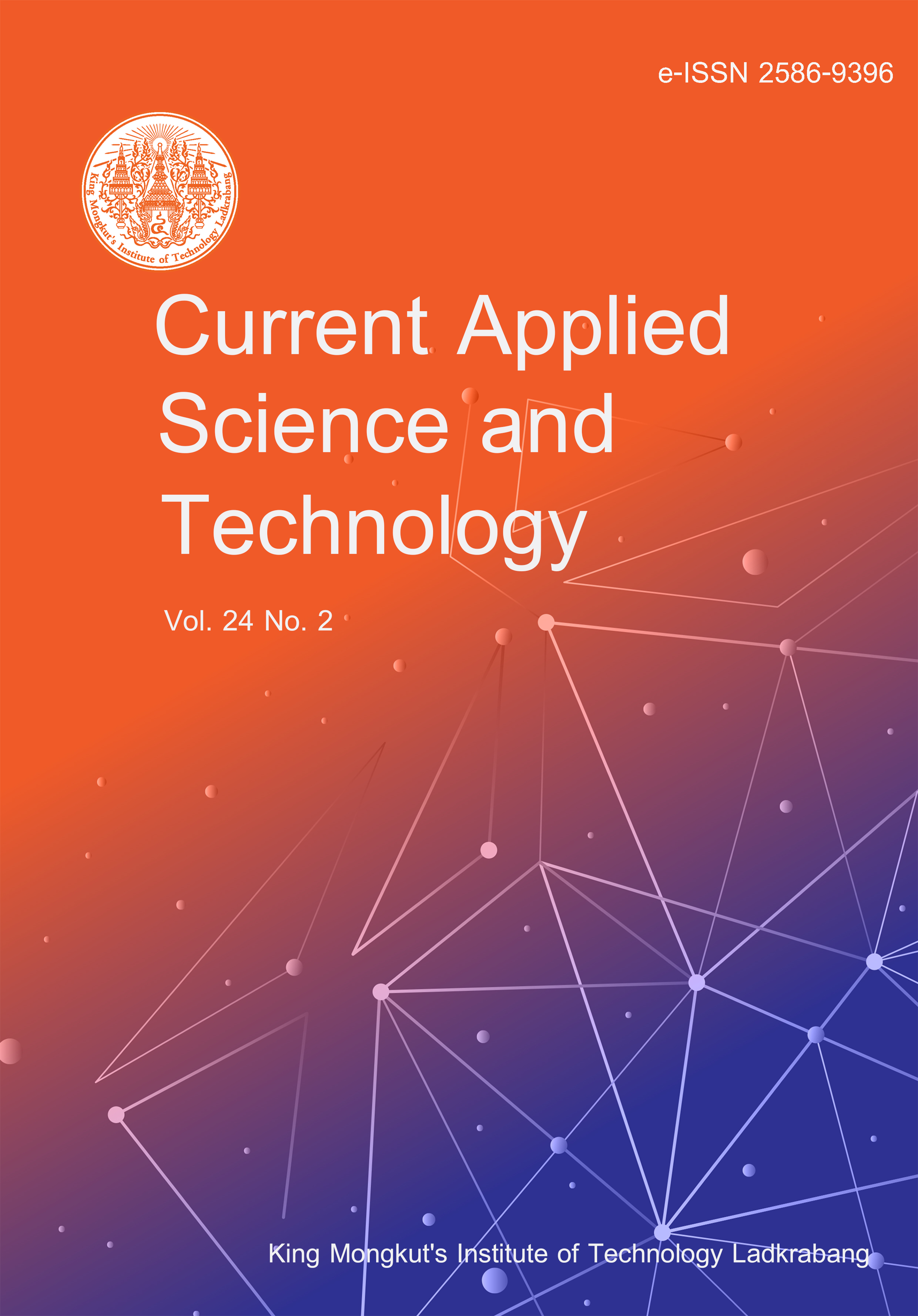An Efficient Road Traffic Modeling through a Novel Real Time Traffic Simulator
Main Article Content
Abstract
Dynamic traffic control is a challenging task that involves meeting rising traffic demands and cutting down on intersection delays. The existing yellow/red/green light fixed transition periods used by traffic controllers make it impossible for them to adapt to changing real-time traffic conditions at intersections. Furthermore, it would be impractical to hire traffic officers for every intersection throughout the day due to a lack of personnel, and even if sufficient personnel are available, it would be a very expensive set up. A fuzzy based traffic model was designed and simulated in real time conditions using the developed traffic simulator algorithm to control the traffic jamming at road intersections. The developed fuzzy model was based on three fuzzy inputs and its performance was measured for 13 cases of varying road width. The developed model outperformed the traditional fixed-time delay model in all the cases and the level of improvement was further increased when the congestion was high. Narrower roads were more congested and the improvement with fuzzy systems as compared to its fixed time delay counterparts was as high as 26%. This research findings clearly support the use of fuzzy logic for handling the most challenging problem of traffic congestion in densely populated regions.
Article Details

This work is licensed under a Creative Commons Attribution-NonCommercial-NoDerivatives 4.0 International License.
Copyright Transfer Statement
The copyright of this article is transferred to Current Applied Science and Technology journal with effect if and when the article is accepted for publication. The copyright transfer covers the exclusive right to reproduce and distribute the article, including reprints, translations, photographic reproductions, electronic form (offline, online) or any other reproductions of similar nature.
The author warrants that this contribution is original and that he/she has full power to make this grant. The author signs for and accepts responsibility for releasing this material on behalf of any and all co-authors.
Here is the link for download: Copyright transfer form.pdf
References
Worldometer, 2022. World Population by Year. [online] Available at: https://www.worldometers.info/world-population/world-population-by-year.
CEIC Data, 2022. India Motor Vehicles Sales Growth. [online] Available at: https://www.ceicdata.com/en/indicator/india/motor-vehicles-sales-growth.
Sadoun, B., 2003. An efficient simulation methodology for the design of traffic lights at intersections in urban areas. Simulation, 79(4), 243-251.
Sadoun, B., 2008. On the simulation of traffic signals operation. Simulation, 84(6), 285-295.
Adewoye, O., Ajibade, O. and Olayemi, A., 2015. Modelling of a fuzzy traffic light controller. International Journal of Research in Mechanical and Materials Engineering, 1(1), 6-14.
Alam, J. and Pandey, M.K., 2015. Design and analysis of a two stage traffic light system using fuzzy logic. Journal of Information Technology and Software Engineering, 5(3), https://doi.org/10.4172/2165-7866.1000162.
Homaei, H., Hejazi, S.R. and Dehghan, S.A.M., 2015. A new traffic light controller using fuzzy logic for a full single junction involving emergency vehicle preemption. Journal of Uncertain Systems, 9(1), 49-61.
Lai, G.R., Soh, A., Sarkan, H.M.D., Rahman, R.A. and Hassan, M.K., 2015. Controlling traffic flow in multilane-isolated intersection using ANFIS approach techniques. Journal of Engineering Science and Technology, 10(8), 1009-1034.
Cao, J. and Wang, Y., 2016. Fuzzy control of intersection signal based on optimized genetic algorithm. Proceedings of the 2016 International Conference on Civil, Transportation and Environment, Guangzhou, China, January 30-31, 2016, pp. 538-546.
Yusupbekov, N.R., Marakhimov, A.R., Igamberdiev, H.Z. and Umarov, S.X., 2016. An adaptive fuzzy-logic traffic control system in conditions of saturated transport stream. The Scientific World Journal, 2016, https://doi.org/10.1155/2016/6719459.
Jovanović, A.D. and Kukić, K.S., 2017. Controlling an isolated oversaturated intersection in real time. Fuzzy logic approach. Vojnotehnicki glasnik/Military Technical Courier, 65(4), 866-881.
Cheng, J., Wu, W., Cao, J. and Li, K., 2016. Fuzzy group-based intersection control via vehicular networks for smart transportations. IEEE Transactions on Industrial Informatics, 13(2), 751-758.
Jin, J., Ma, X. and Kosonen, I., 2017. An intelligent control system for traffic lights with simulation-based evaluation. Control Engineering Practice, 58, 24-33.
Zaid, A.A., Suhweil, Y. and Yaman, M.A., 2017. Smart controlling for traffic light time. Proceedings of 2017 IEEE Jordan Conference on Applied Electrical Engineering and Computing Technologies (AEECT), Amman, Jordan, October 1-5, 2017, pp. 176-180.
Zachariah, B., Ayuba, P. and Damuut, L.P., 2017. Optimization of traffic light control system of an intersection using fuzzy inference system. Science World Journal, 12(4), 27-33.
Dereli, T., Cetinkaya, C. and Celik, N., 2018. Designing a fuzzy logic controller for a single intersection: a case study in Gaziantep. Sigma Journal of Engineering and Natural Sciences, 36(3), 767-781.
Rocha, J.A.C., Martínez, S.I., Menchaca, J.L., Villanueva, J.D.T., Berrones, M.G.T., Cobos, J.P. and Agundis, D.U., 2018. Fuzzy rules to improve traffic light decisions in urban roads. Journal of Intelligent Learning Systems and Applications, 10(2), 36-45.
Zuraime, F.S., Rahman, S.F.A., Yaakob, A.M. and Rahman, N.R.A., 2019. Traffic waiting time management using fuzzy logic approach. Proceedings of the 4th Innovation and Analytics Conference and Exhibition (IACE 2019), Kedah, Malaysia, March 25-28, 2019, pp. 030042-1-6.
Nie, L., Ning, Z., Obaidat, M. S., Sadoun, B., Wang, H., Li, S., Guo, L. and Wang, G., 2020. A reinforcement learning-based network traffic prediction mechanism in intelligent internet of things. IEEE Transactions on Industrial Informatics, 17(3), 2169-2180.
Nie, L., Wang, X., Wang, S., Ning, Z., Obaidat, M.S., Sadoun, B. and Li, S., 2021. Network traffic prediction in industrial Internet of Things backbone networks: A multitask learning mechanism. IEEE Transactions on Industrial Informatics, 17(10), 7123-7132.
Singh, A., Kang, S. and Aggarwal, A., 2021. Traffic congestion controller: a fuzzy based approach. Proceedings of 2021 International Conference on Disruptive Technologies for Multi-Disciplinary Research and Applications (CENTCON), Bengaluru, India, November 19-21, 2021, pp. 355-358.
Singh, A., Obaidat, M.S., Singh, S., Aggarwal, A., Kaur, K., Sadoun, B., Kumar M. and Hsiao, K. -F., 2022. A simulation model to reduce the fuel consumption through efficient road traffic modelling. Simulation Modelling Practice and Theory, 121, https://doi.org/10.1016/j.simpat.2022.102658.






